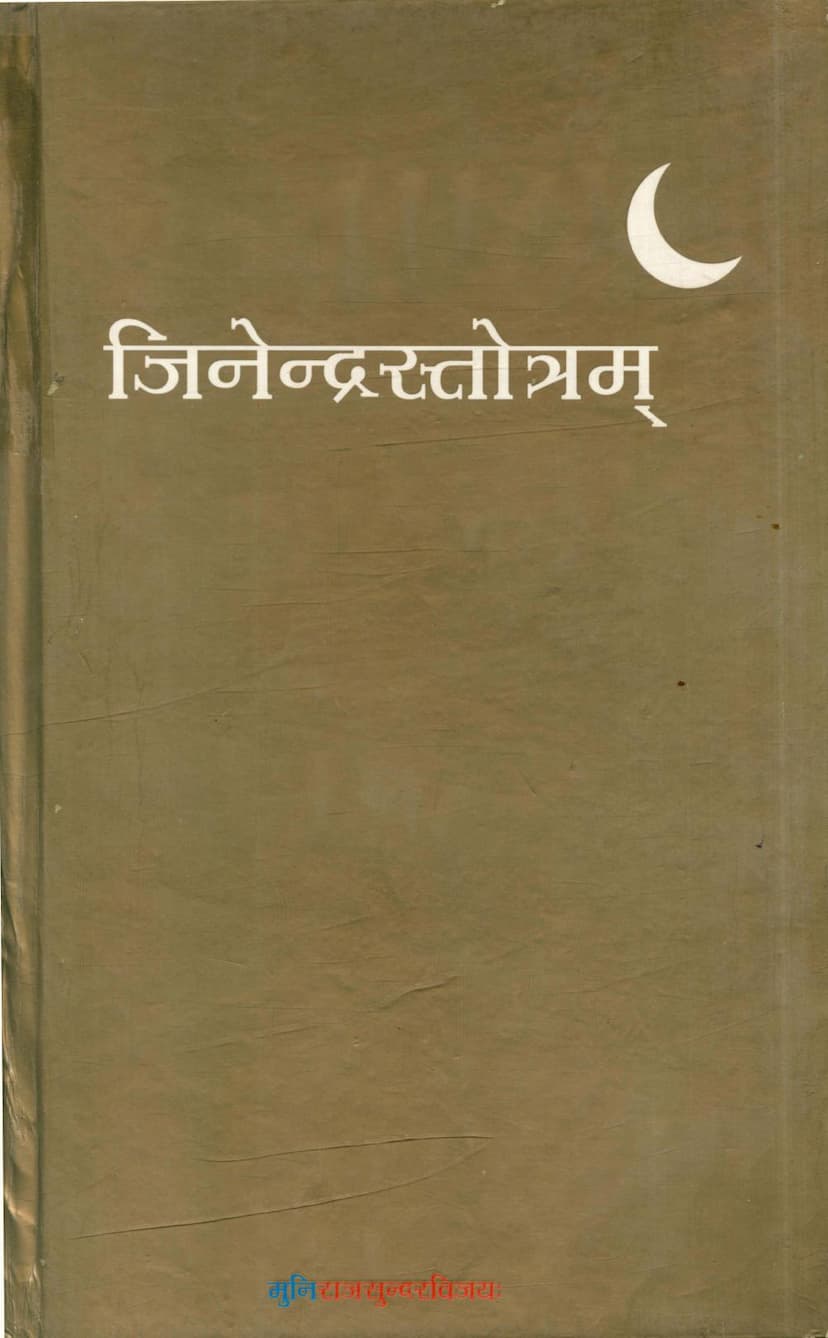Jinendra Stotram
Added to library: September 2, 2025

Summary
This Jain text, titled "Jinendra Stotram" by Rajsundarvijay, published by Shrutgyan Sanskar Pith, is a collection of devotional hymns praising the twenty-four Tirthankaras, the enlightened beings in Jainism.
Here's a comprehensive summary of the provided text:
1. Genesis and Dedication: The book details the author's inspiration and process behind creating the stotram. It was conceived during a pilgrimage to Shikharji Mahatirtha and dedicated to his revered guru, Param Pujya Acharya Vijay Shri Rajendrasurishwarji Maharaj. The author expresses immense gratitude and devotion to his guru and the lineage of spiritual masters.
2. Unique Compositional Style: A key feature of the "Jinendra Stotram" is its unique compositional constraint: each hymn dedicated to a Tirthankara is primarily composed using only one consonant and one vowel (the vowel 'a'). The author explains the rigorous challenges and creative solutions involved in adhering to this "ekakshari" (single-letter) and "ekaswari" (single-vowel) rule for the first three lines of each hymn. The final line is in the Vasantatilaka meter. The introductory verses also employ a unique style, starting with the last letters of the alphabet and moving backward.
3. Author and Commentary: The author, Muni Rajsundar Vijay, is a disciple of Muni Rajpunyavijay, who is a disciple of the highly revered Acharya Vijay Shri Rajendrasurishwarji Maharaj. The text includes a commentary named "Manjula Vritti" (written by the author himself), which elucidates the meaning of the verses, breaks down complex compound words, and provides references to other Jain scriptures. A simpler translation called "Ruchira" is also provided in Gujarati and Hindi for broader accessibility.
4. Structure of the Stotram: The "Jinendra Stotram" consists of hymns dedicated to each of the 24 Tirthankaras, starting with Shri Rishabhjin and concluding with Shri Mahavirswami. Each section includes the hymn itself, followed by the commentary and translation.
5. Thematic Content: Each stotra praises the specific attributes, virtues, and divine qualities of the respective Tirthankara. The hymns often describe them as beacons of peace, knowledge, compassion, and liberation, highlighting their role in guiding humanity towards spiritual enlightenment.
6. Inspiration and Devotion: The author's deep devotion to the Tirthankaras and his guru is evident throughout the text. He describes the arduous yet fulfilling process of composing these hymns, often attributing the success to divine grace and his guru's blessings. The text also includes a "Prashasti" (concluding verses) summarizing the creation of the stotram and expressing gratitude.
7. "Arhat Stotram" and "Dark and Light": The book also includes a separate section titled "Arhat Stotram," which seems to be a companion piece. The "Dark and Light" section provides a narrative about the author's inspiration for using specific letters and avoiding others in the stotrams, influenced by his guru's guidance. This section reveals the author's deep reverence for letters, considering them divine offerings.
In essence, "Jinendra Stotram" is a remarkable work of Jain literature that combines profound devotional sentiment with exceptional linguistic and poetic skill. The author's dedication to his spiritual masters and his innovative approach to hymn composition make this text a significant contribution to Jain devotional literature.